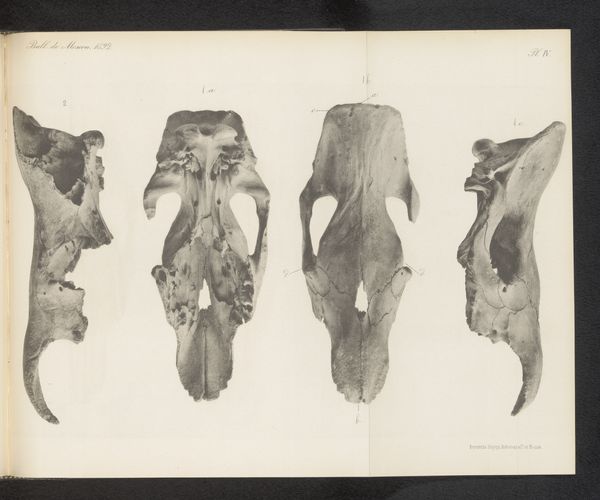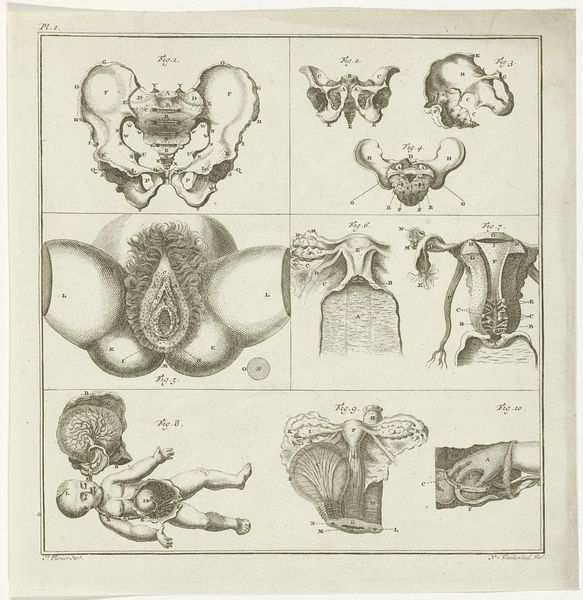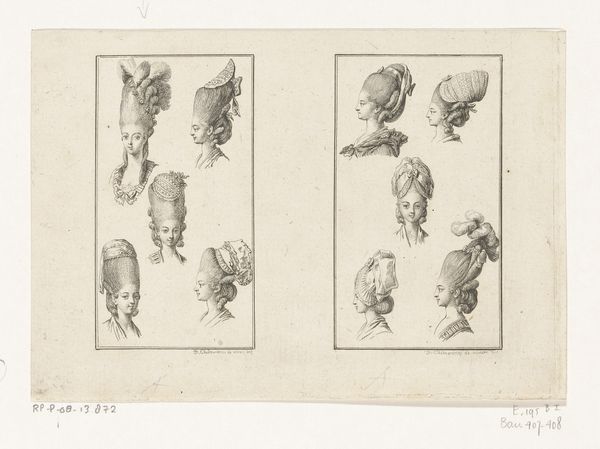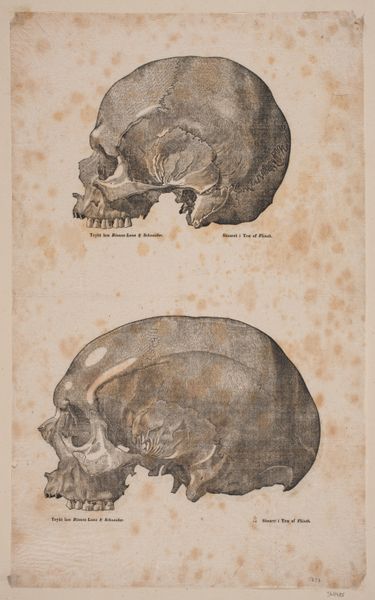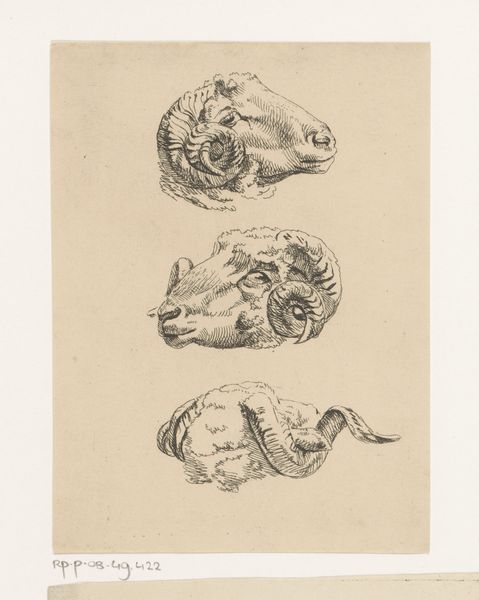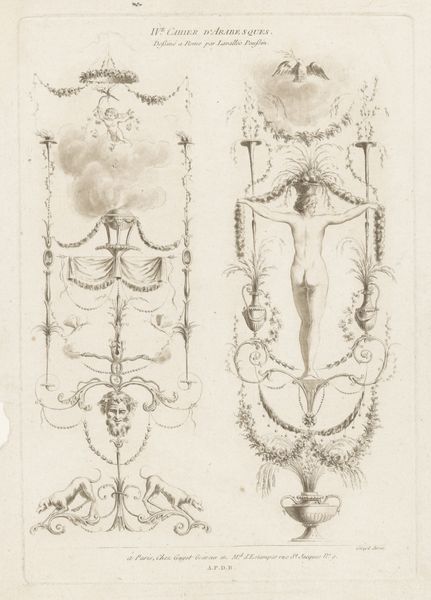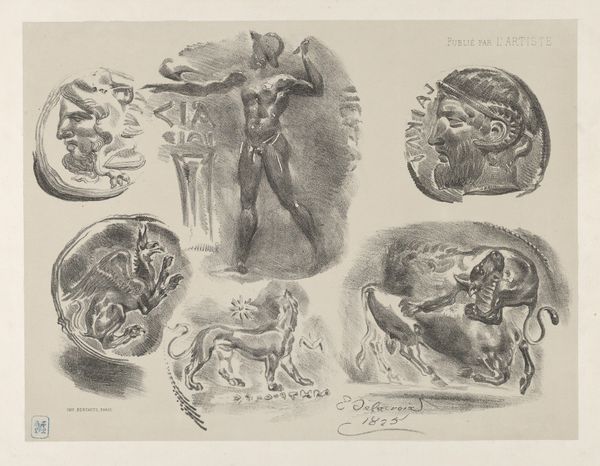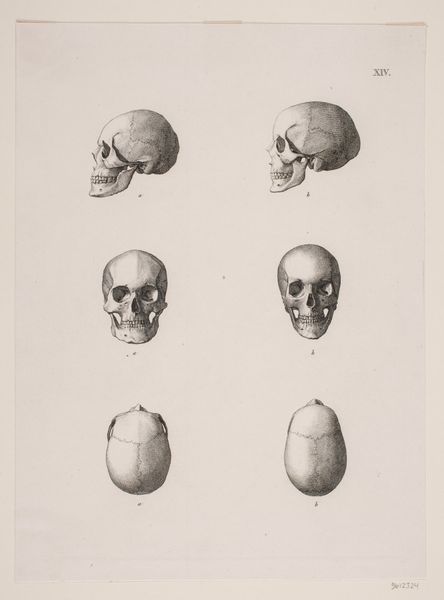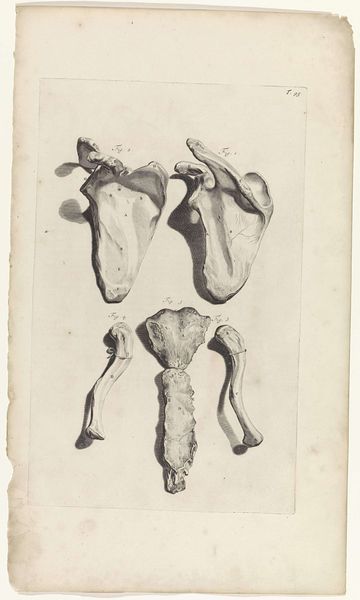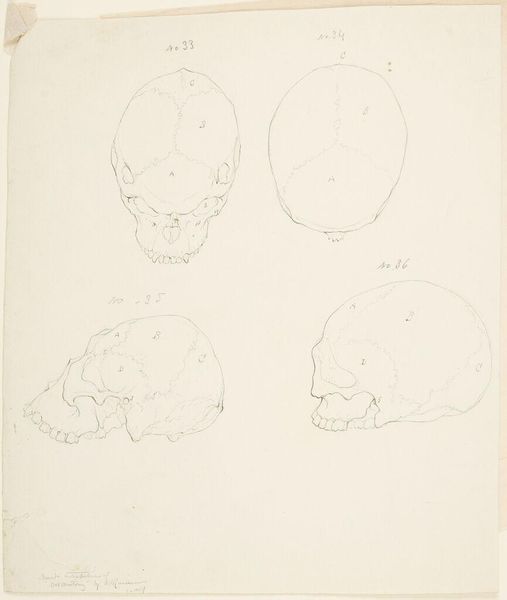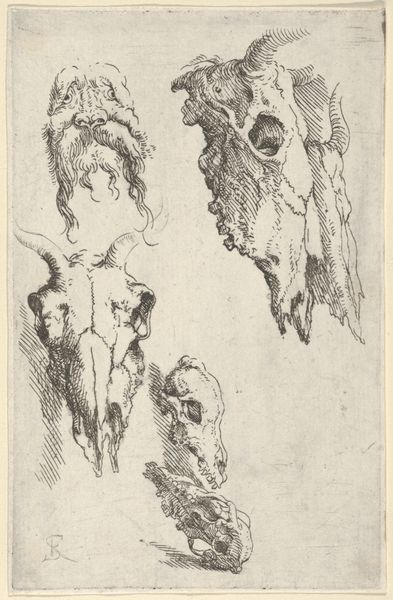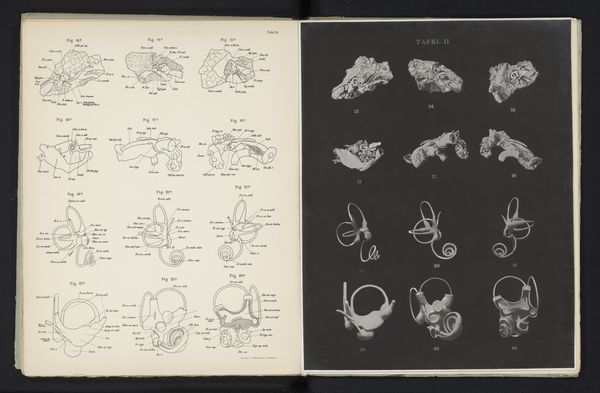
drawing, pencil
#
portrait
#
drawing
#
pencil sketch
#
form
#
pencil
#
line
#
pencil work
#
academic-art
#
naturalism
#
realism
Dimensions: height 206 mm, width 140 mm
Copyright: Rijks Museum: Open Domain
Curator: This drawing, entitled *Knaagdierschedels*, which translates to “Rodent Skulls,” was created around 1890 by the Dutch artist Theo van Hoytema. It is rendered in pencil and currently resides here at the Rijksmuseum. What is your first take on this piece? Editor: Stark, almost clinical. There's an immediate sense of vulnerability exposed – these meticulously rendered skulls against the pale background create a feeling of profound anatomical scrutiny, like specimens pinned for dissection. Curator: Hoytema's interest in naturalism and realism shines through, doesn't it? Beyond simple scientific observation, he imbues the skeletal forms with an element of contemplation. You feel the academic process in every delicate pencil line. What is it about the use of skeletal remains as imagery do you find? Editor: The imagery taps into centuries of symbolic weight around mortality, vanity, and ephemerality. Skulls have long served as a memento mori in art – a stark reminder of death’s inevitability. But in a cultural context of scientific advancement, the drawing takes on a curious neutrality – a quiet, perhaps respectful look at natural structure. Curator: Absolutely, the visual weight of the "memento mori." The cultural symbolism connected to animal remains extends back millennia. Animals often feature in rituals, totems, and as symbolic representatives. Here, the rodent skull may hint at a contemplation of the cyclical nature of life within our culture and ecosystem. Editor: Interesting – the choice of rodents too – so easily overlooked. Perhaps van Hoytema aimed to democratize the dialogue with death. Elevating something so easily dismissed, making it fit for careful consideration, speaks volumes about how artistic representation shapes socio-cultural value. It prompts you to pause and acknowledge the hidden complexity in even the smallest lives. Curator: I agree wholeheartedly. These understated depictions of such "common" remains prompts introspection of our place within natural systems. It reminds viewers of both fragility and resilience that runs through everything on our shared planet. Editor: So while seemingly simple on the surface, there's real intellectual heft here, both personally and sociologically. It goes beyond just documenting, venturing to challenge pre-conceived ideas of the role images can play within culture.
Comments
No comments
Be the first to comment and join the conversation on the ultimate creative platform.
